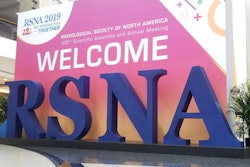
A cost analysis of well-established CT lung cancer screening guidelines confirmed that screening remains cost-effective even at the oldest upper age limits, with screening of older people incurring more costs but offering greater reductions in mortality risk. The findings were published online November 4 in Annals of Internal Medicine.
Prior research has demonstrated that CT lung screening following the National Lung Screening Trial (NLST) guidelines is cost-effective, i.e., the total cost per quality-adjusted life year (QALY) gained is less than $100,000.
However, several CT lung screening guidelines other than the NLST utilize eligibility criteria with higher upper age limits -- a difference that likely reduces the cost-effectiveness of screening since older individuals are at greater risk of dying from causes other than lung cancer, noted co-author Chung Yin Kong, PhD, and colleagues from Massachusetts General Hospital.
The researchers thus sought to determine whether CT lung cancer screening would still be cost-effective using criteria proposed by the U.S. Centers for Medicare and Medicaid Services (CMS) and the U.S. Preventive Services Task Force (USPSTF). Both the CMS and USPSTF guidelines have the same screening eligibility criteria as the NLST except with older upper age limits -- 77 years for the CMS and 80 years for the USPSTF criteria -- compared with 74 years in the NLST.
To compare costs and outcomes for these guidelines, Kong and colleagues applied four microsimulation models developed by different groups in the U.S. and the Netherlands to a cohort of 2 million current and former smokers eligible for lung screening.
The models were calibrated to the lung cancer incidence and mortality data from the NLST and validated using data from the Prostate, Lung, Colorectal, and Ovarian Cancer Screening (PLCO) Trial. The models also assumed 100% screening adherence. Costs covered all expenses related to lung screening and diagnostic procedures as well as those related to lung cancer treatment.
Overall, the models confirmed that CT lung screening would be cost-effective for the NLST, CMS, and USPSTF screening strategies, despite the differences in upper age limit. The NLST criteria were associated with the greatest likelihood of being cost-effective and the lowest cost per QALY gained, followed by the CMS and then the USPSTF criteria.
| Comparison of CT lung screening eligibility criteria | |||
| NLST (oldest screening age: 74 years) | CMS (oldest screening age: 77 years) | USPSTF (oldest screening age: 80 years) | |
| Cost per QALY gained | $49,200 | $68,600 | $96,700 |
| Probability of being cost-effective | 98% | 77% | 52% |
| Reduction in lung cancer deaths | 8% | 9% | 10% |
| Overdiagnosis rate | 6% | 6% | 7% |
The models showed that increasing the upper age limit for screening led to greater reductions in the lung cancer mortality rate, the corollary being higher costs and more overdiagnoses, the authors wrote.
The findings of Kong and colleagues' cost analysis could help inform health policy decisions regarding age cutoffs for CT lung cancer screening, though it may be worthwhile for future analyses to account for factors beyond age as well, noted David Kim, PhD, and Peter Neumann, ScD, of Tufts Medical Center in an accompanying editorial.
"In particular, guidelines using risk prediction models might consider several risk factors for lung cancer mortality, such as age, sex, race, family history, body mass index, smoking exposure, years since smoking cessation, and history of emphysema," they wrote. "Apart from issues surrounding eligibility criteria, policies should prioritize efforts to increase very low screening rates."




















